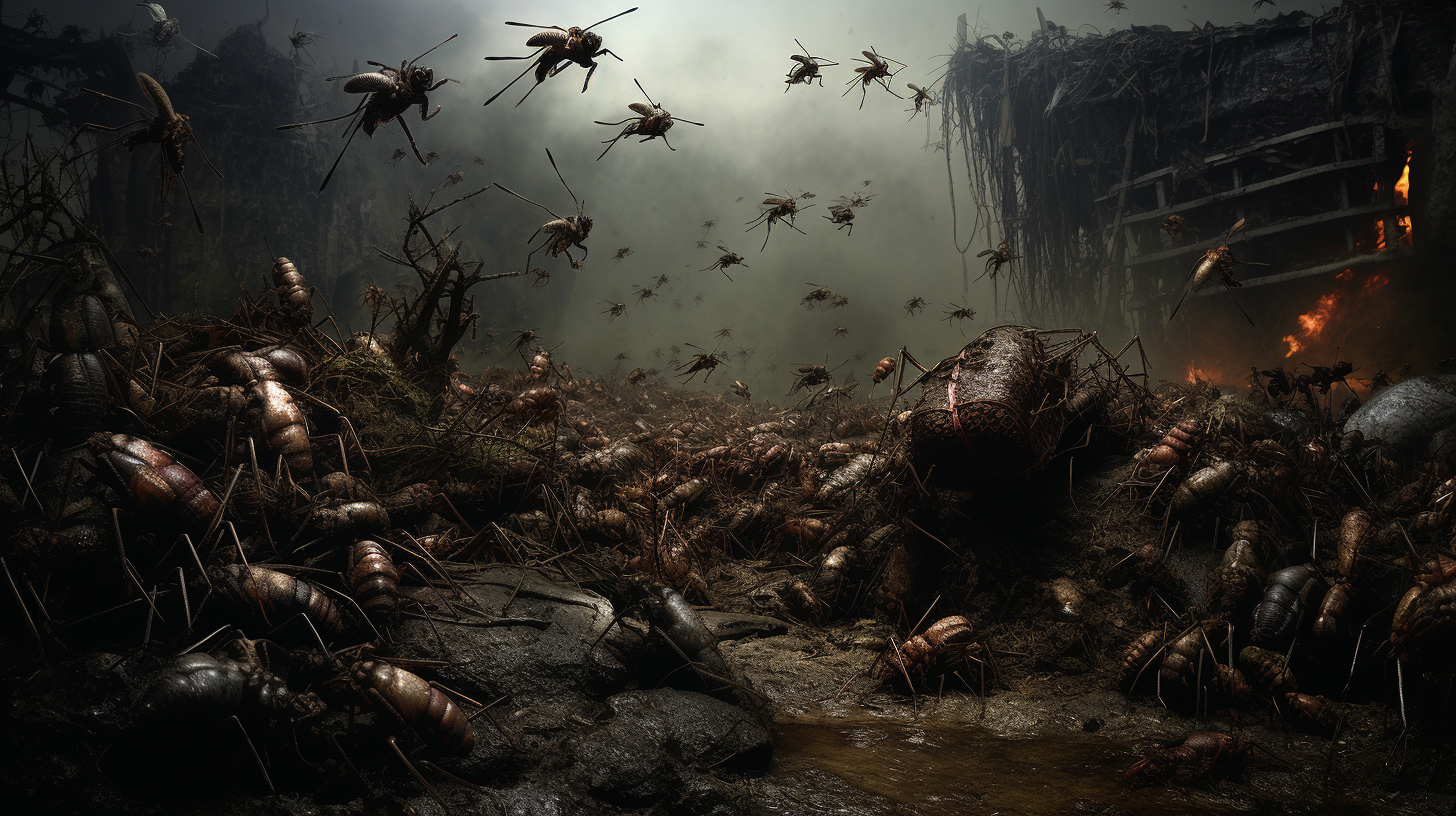The sun scorches an earth silenced of its once perpetual buzz—a haunting requiem for the departed masters of the skies and soil. The stark silence lingers ominously, interrupted only by the eerie gusts of wind that carry the weight of what was once dismissed as cyclical anomalies. ‘Reign of Disarray – When Insects Vanished from the Food Chain’ delves deep into the chasm left by the world’s most underrated toilers, examining the ripple effects through our natural hierarchy.
Our ongoing storyline shadows our most diminutive comrades’ desertion, cornering humanity into an obscure maze of existential conundra. Without the insect architects, the intricate web of life has begun to unravel, thread by ethereal thread. While ‘Where Have All The Insects Gone?’ glanced into the abyss of their absence, it is within this chasm that we now reside, exploring the depths of the consequences left in the wake of the mass vanishing act.
In this world bereft of trans-pollination, fruit trees stand barren, their blossoms unvisited, untended, and fruitless—punishing humanity for its hubris with a cruel irony. The collapse of these essential processes is not just a concern for conservationists, but a dirge for human sustenance. The reality is that crops are withering on the vine, creating ‘Still Lifes’ more haunting than any ever captured on canvas.
Let us not forget the role of insects in decomposition—the noble breakdown of organic matter. As the deceased lie in state, an unending testament to the disorder, the detritivores that once played their role in the cycle of life are gone. The circle of life is now a spiral of death, as decay slows, and we are left to ponder the tombs of time that refuse to close.
Amid the turmoil, some voices still dare whisper of solutions. Resilient scientists thrust CRISPR’s blade into the Gordian knot, engineering new life in desperate gambits, but the complexities of ecosystem restoration mock their fevered advances. After all, how does one resurrect a symphony with mere notes when the maestros have vanished into oblivion?
As we venture through the remnants of what was once verdant splendor, we find the invariable truth of nature’s reciprocity now broken. Predators, deprived of their six-legged prey, falter and fade away, echoing the dominos that began with the insects’ demise. This cascade of extinction serves as a sobering reminder that one does not have to witness the end to feel its chill.
The ‘Reign of Disarray’ reaffirms our darkest musings—a requiem for earth’s six-footed guardians. What do we, the undesignated stewards of this planet, have to show for our tenure? The pièce de résistance of our neglect has unfold before us, not with a bang, but a whimper, as T.S. Eliot would not have imagined.
Light fades now, and a hostile hush settles—the final curtain falling on the stage of the Anthropocene. Yet amidst the chaos, there is a macabre beauty, an art to the entropy, and a lesson etched into the barren earth. The absence of the infinitesimal awakens us to the grandeur of their past existence and the scale of our current plight.
As we stand amidst the heralds of our own creation, the question lingers like a specter over the desolate landscapes—What hails after the reign of disarray? But in these pages, we need not answer, for the question serves as the epitaph of our dystopian tableau—a final musing for the reader to ponder, as the echo of tiny wings beats no more against the hollow skies.
